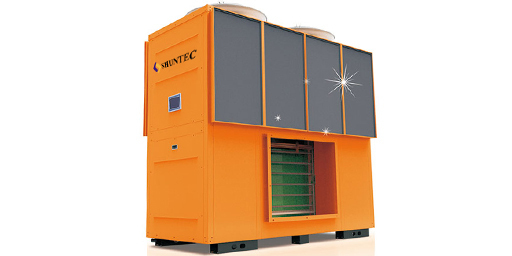Application of heat pump drying in vegetables
Dehydrated vegetables, also known as rehydrated vegetables, are dried vegetables made by washing and drying fresh vegetables to remove most of the water in the vegetables. The original color and nutrient composition of vegetables remained basically unchanged. Dehydrated vegetables are not only easy to store and transport, but also can effectively regulate the season of vegetable production. Compared with other fresh vegetables, dehydrated vegetables have the characteristics of being small in size, lightweight, can be recovered after entering the water, and they are easy to transport and eat.
There are two main types of dehydrated vegetables:
First, AD vegetables, also known as dried vegetables. Dehydrated vegetables made by drying and dehydrating mechanisms are collectively referred to as AD vegetables.
Second, FD vegetables, also known as frozen vegetables. Dehydrated vegetables made by freeze dehydration are collectively referred to as FD vegetables.
In this article, we only discuss AD vegetables.
The traditional drying methods are the drying method of the drying room returning to the dragon fire channel, which has the following problems:
1. The heating temperature is too high. In traditional drying technology, the heating temperature is not easy to control. Generally, the heating temperature is around 75-90 °C, and the drying process of dehydrated vegetables requires that the drying temperature should not exceed 65 °C.
2. The drying time is too long. Using traditional methods, it takes at least 24 hours to process 1 t of vegetables. Even so, occasionally re-heating and drying occur due to poor drying effect.
3. High energy consumption. The traditional drying process has low thermal efficiency, about 30%-60%. In the drying process, the heat of drying and evaporating moisture accounts for about 36%, and the loss of waste gas accounts for about 58%. The dry material takes away the heat and the heat of the dryer. The losses are 2% and 2%, respectively, and the thermal efficiency is only 40%.
Vegetable dehydration process:
Dehydrated vegetables are processed vegetables that use drying equipment to remove excess water contained in vegetables to keep chlorophyll and vitamins contained in fresh vegetables from being lost. After the vegetables are dehydrated, the taste and color remain unchanged, and they are convenient to eat. They are very popular in domestic and foreign markets.
For the production of dehydrated vegetables, various vegetables such as leafy vegetables, root vegetables, squash, and stem vegetables can be used as raw materials. Different types of vegetables have different processing techniques, but in general, they are: raw material finishing – washing and slicing – cooking and cooling (or soaking) – draining and drying – sorting and packaging.
1. Sorting of raw materials: Choose vegetables with suitable maturity, fresh, tender, and clean, remove yellow leaves, old leaves, and root pieces one by one, and wash away the sediment, dirt, dust, and other impurities attached to the surface with clean water.
2. Wash and slice: According to different varieties, cut them into segments, slices, wires or strips, and other shapes.
3. Cooking and cooling: The steaming (cooking) time should be determined according to different vegetable varieties, generally 2 min-7 min. There are 2 methods of operation:
(1) Precooking: first boil the water in the pot until it boils, then put the sorted vegetables into the pot and stir up and down to make it heat evenly.
(2) Steaming: Steam the peeled and washed vegetables in steam. The steaming time can be determined according to different vegetable varieties.
Pre-cooked or steamed vegetables should be rinsed with cold water immediately after the pot is taken to make the temperature drop, and ice water should be used for low-temperature cooling for better effect. Some vegetables are not pre-cooked or steamed in order to maintain their original spiciness and aroma.
Vegetable varieties that are not cooked can be soaked. Immerse the sorted fresh vegetables in boiling water with a mass fraction of 0.5% baking soda, stir evenly, scald for 1min-2min, make the fresh vegetables reach the second maturity, take them out, and then immerse them in cold water with a mass fraction of 0.25% baking soda to cool Thoroughly, drain off the water, put it in a sack and press to remove the water.
4. Draining and drying: In order to shorten the drying time of the cooled vegetables, the pressing method can be used to remove the pulp and spicy sticky substances on the surface, so as to maintain the original color and luster, and then send it to the drying room for drying. When drying in a drying room, a multi-layer rack should be set up to place the raw materials, the temperature should reach 32℃-42℃, and the water should be discharged. The drying equipment should be installed outdoors to keep the drying room clean and ensure the quality of the dried vegetables.
5. Sorting and packaging.



